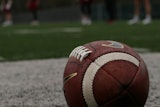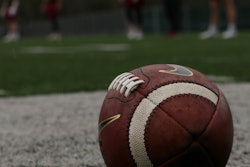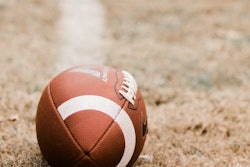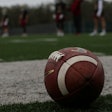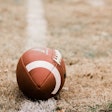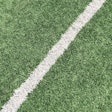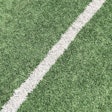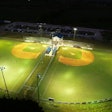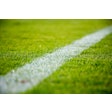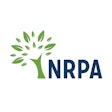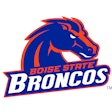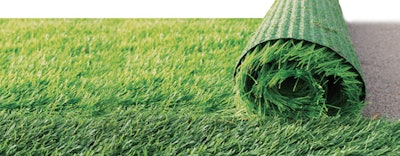
This article appeared in the September issue of Athletic Business. Athletic Business is a free magazine for professionals in the athletic, fitness and recreation industry. Click here to subscribe.
 Thomas P. Shay, is a technical manager at Woodard & Curran, an integrated engineering, science and operations firm.
Thomas P. Shay, is a technical manager at Woodard & Curran, an integrated engineering, science and operations firm.
Many facility owners choose to install synthetic turf fields for their reduced impact on the environment. They don't require pesticides, fertilizers, abundant irrigation or mowing. However, this sustainable approach need not end at the end of a field's functional life. For synthetic turf to continue to be a responsible option for field owners, what happens to these fields following their useful life needs to be a priority consideration.
According to Turf Reclamation Solutions, nearly 1,000 synthetic turf fields will be replaced in the United States this year, with that number projected to increase by 10 percent over the next two years. Taking a more holistic view of synthetic turf use can benefit the environment tremendously, and with enough demand, sustainable, recyclable materials can be used much more widely in these fields, reducing the waste of natural resources and the ultimate contribution to landfills.
DEMAND FOR RESPONSIBLE DISPOSAL
There are more-pressing synthetic turf concerns (crumb rubber safety, injuries and heat, to name three) that field owners are pressuring manufacturers and suppliers to address, but the same kind of pressure needs to be applied to the turf replacement and recycling process.
Right now, the overwhelming majority of field materials are ending up in landfills, and with hundreds of synthetic turf fields being replaced in just the U.S. each year, this presents a great loss of natural resources and an ongoing environmental burden. It is past time for those involved in the synthetic turf industry — consumers, designers and manufacturers — to increase demand for innovation in synthetic turf sustainability.
The need for innovation takes two forms: in the recycling of elements currently used to make synthetic turf, as well as incorporating materials in synthetic turf manufacturing that are more easily recyclable. When we typically talk about recycling, we're more often referring to the process of downcycling, wherein materials are converted into a product with reduced functionality or quality. While this is still important, downcycled materials still eventually make their way into a landfill. The more sustainable approach in terms of synthetic turf fields would be to truly recycle the materials into products that retain the original level of quality and functionality.

There are currently few options for true recycling of the materials most commonly used in synthetic turf fields. One of the challenges is that there are a number of different components integrated with one another — polyethylene, polyurethane, polypropylene, silica sand or styrene butadiene rubber, to name a few — and all of these materials must be separated from each other to be recycled in any way. Once they have been separated, there are options for repurposing, recycling or reusing almost all of these materials.
The other primary hurdle is the cost associated with transporting the materials to a location to be processed, either before or after separation, which may result in significantly higher recycling costs.
The Synthetic Turf Council suggests a variety of ways that the components of synthetic turf fields can be used past their initial intended purpose. Starting from the bottom of a typical synthetic turf system, a shock pad can typically be reused for multiple field installations rather than being replaced at the end of each field's lifespan. While fields last approximately eight to 10 years, depending on use and care, a quality shock pad can have a functional life that exceeds 25 years. Once they can no longer be used for athletic purposes, some pads can be used as golf mats or even mats for farm animals, and pads made of virgin materials can be recycled.
The synthetic turf itself, usually made up of a combination of polyethylene turf fibers and a polyurethane coated backing, can be reused on golf driving ranges as mats or sand trap lining; for recreational or landscaping purposes in pet parks, highway erosion strips, or at airports; at batting cages and hitting facilities; or as indoor fields that accommodate band practice or general play activity. These materials can also be used to create synthetic lumber or injection-molded items, such as dog bowls, bottle caps and non-critical auto parts.
As for infill, crumb rubber may be reused as-is for multiple field life cycles, depending on how it performs in compression and gradation tests. It can also be used as acoustic barriers for railroads, speed bumps on roadways, industrial flooring or playground surfacing.
Alternative infills, such as organic infill and coated or uncoated sand can all be reused for multiple athletic field life cycles. Organic infill also has the distinct advantage of being able to be immediately returned to the environment with no adverse effects.
![[Photos courtesy of Sports Turf]](https://img.athleticbusiness.com/files/base/abmedia/all/image/2016/10/ab.turf-images916.png?auto=format%2Ccompress&fit=max&q=70&w=400) [Photos courtesy of Sports Turf]
[Photos courtesy of Sports Turf]
THINKING HOLISTICALLY FROM THE OUTSET
Becoming more environmentally responsible with our use of synthetic turf fields begins in the initial field-planning process. "Cradle to Cradle" design, or regenerative design, is an approach to creating products that can continue to be recycled into materials of an equal quality, the idea being that a material never makes its way to the "grave" (a landfill) but continues to function effectively in a given system. Though the term Cradle to Cradle is a registered trademark of McDonough Braungart Design Chemistry consultants, the methodology is one that can be applied to the innovation of systems across industries.
For athletic field planners and owners, this means rethinking the materials we're using in synthetic turf, as well as end-of-lifecycle processes. The way synthetic turf is removed from a field has almost as much of an impact on the opportunities for recycling as the selection of reusable materials during field design and construction. The simplest solution for many owners might be to excavate the field, piling all the materials together and hauling them off-site. However, the various components of a field are challenging enough to remove from one another for recycling and repurposing without being combined haphazardly with each other in a heap.
A more systematic process for field removal can maximize the potential for reuse. Specialized equipment and processes allow contractors to slice the synthetic turf into manageable strips, extract and collect the infill materials, roll the turf, and take the materials to a facility that can convert them into reusable or recyclable components, if they are not already scheduled for reuse or repurposing at the local project site. Since this may be a more expensive option than simply excavating a field, pricing out more-responsible removal options and associated costs at the beginning of the field project will be helpful in ensuring you're approaching the installation of a synthetic turf field sustainably for its entire life cycle.
In addition to reducing the incredible burden on landfills that synthetic turf field replacement will represent over the next few years, these same steps toward sustainability can help with the other primary concerns associated with synthetic turf. Using a shock pad, which can be reused for multiple life cycles before being recycled, can also help reduce injuries; organic infill, which can be replaced directly into the environment, aids in addressing the issue of heat since it has evaporative cooling properties; and alternatives to crumb rubber, such as acrylic-coated sand, can be re-coated and reused as infill for multiple field life cycles. There are also some synthetic turf products made of compatible materials and synthetic turf companies that offer material recovery programs upon field replacement, which allow for much easier recycling in many scenarios.
As field owners, and ultimately consumers, it's time we create a real demand for innovation in these primary materials for the safety of our players, the performance of our fields, and the health of our environment.
This article originally appeared in the September 2016 issue of Athletic Business with the title "Recycling Synthetic Turf: responsible choices from start to finish"













